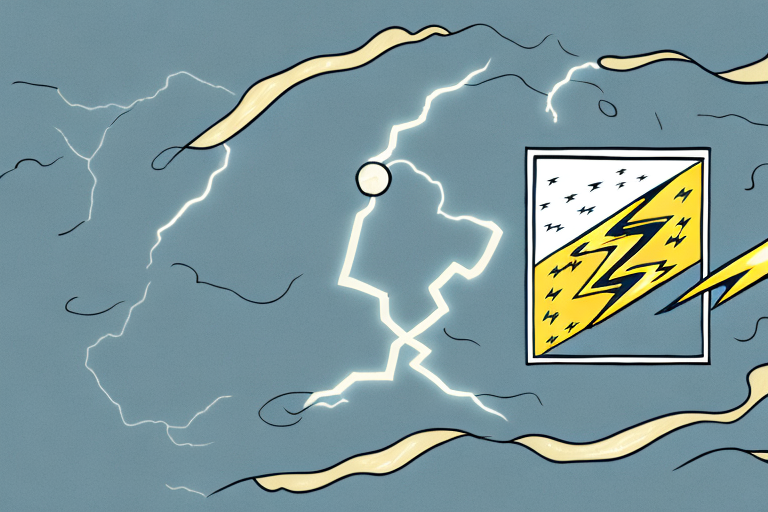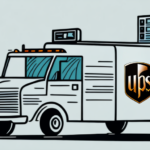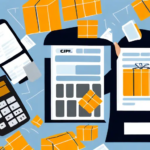How to Expedite a UPS Chargeback
As an online seller, chargebacks are a frustrating reality you have to deal with. One of the most common chargebacks is from UPS, one of the leading courier services in the world. If you find yourself in a situation where you have to deal with a UPS chargeback, it's important to act quickly and efficiently to resolve the issue. In this article, we will go through the entire process of UPS chargebacks, the common reasons for a chargeback, and the steps you need to take to expedite the process.
Understanding the UPS Chargeback Process
Before we get into the details of expedited chargebacks, let's understand how the UPS chargeback process works. When a customer files a dispute with their bank or credit card company, it triggers a chargeback. The chargeback process involves a series of steps, including a notification from the customer's bank or credit card issuer to the merchant, requesting more information or evidence to support the transaction. The merchant, in turn, has a limited amount of time to submit evidence to challenge the dispute.
According to a [2023 UPS report](https://www.ups.com/us/en/services/chargebacks.page), the average chargeback resolution time is approximately 45 days. However, by following a structured approach, you can expedite this process and potentially reduce the impact on your business.
Common Reasons for UPS Chargebacks
Chargebacks can happen for several reasons, and UPS chargebacks are no different. Some of the most common reasons for UPS chargebacks include:
- Wrong address: If the address on the package is incorrect or incomplete, the package may be returned to the sender, leading to a chargeback.
- Unauthorized purchase: If the customer did not authorize the purchase, it could lead to a chargeback.
- Missing documentation: Any missing paperwork like proof of delivery or a detailed invoice could lead to a chargeback.
Additionally, other reasons for UPS chargebacks may include:
- Late delivery: If the package is not delivered within the promised timeframe, the customer may dispute the charge and request a chargeback.
- Damaged goods: If the package arrives at its destination in a damaged condition, the customer may request a chargeback to recover the cost of the damaged goods.
According to a study by Shopify, the average chargeback rate across all industries is about 0.7%. Being proactive in addressing common issues can help you stay below this threshold.
It is important for businesses to understand the common reasons for UPS chargebacks and take steps to prevent them. This may include ensuring that all addresses are correct and complete, obtaining proper authorization for purchases, and providing all necessary documentation with each shipment. By taking these steps, businesses can reduce the risk of chargebacks and maintain positive relationships with their customers.
How to Prevent UPS Chargebacks from Happening
Preventing chargebacks is always better than having to deal with them. Here are a few steps you can take to prevent UPS chargebacks from happening:
- Verify addresses: Ensure that you have the correct and complete address before shipping. Use a tool like UPS address validation to validate the shipping address.
- Provide detailed descriptions: Provide detailed descriptions of the products, including SKU numbers, to make it easier for the customer to recognize the purchase.
- Update tracking information: Update tracking information promptly so that customers can track their shipments and be confident that their packages are on the way.
Another important step to prevent UPS chargebacks is to properly package your products. Make sure that your products are packaged securely and appropriately for their size and weight. This will help prevent damage during shipping and reduce the likelihood of customers filing chargebacks due to damaged products. Additionally, consider offering insurance options for customers who want extra protection for their shipments.
Implementing clear return policies and ensuring excellent customer service can also significantly reduce the chances of chargebacks. According to a [Nielsen report](https://www.nielsen.com/us/en/insights/article/2022/global-consumers-even-dislike-shopping-online-what-this-means-for-retailers/), 62% of consumers expect a seamless return process, which can influence their decision to file a chargeback.
Steps to Take When a UPS Chargeback Occurs
Even with preventative measures in place, a UPS chargeback can still occur. When a chargeback is initiated, you have a limited amount of time to gather and submit evidence before the chargeback is finalized. Here are the steps you need to take to expedite the UPS chargeback process:
- Review the chargeback notification: Carefully review the notification from the issuing bank or credit card company. Understand the reason for the chargeback and the deadline for submitting evidence.
- Gather evidence: Gather as much evidence as possible to prove the legitimacy of the transaction. This may include proof of delivery, a detailed invoice, and communication with the customer.
- Submit evidence: Respond promptly and submit all the relevant evidence to the issuing bank or credit card company. Ensure that all documents are clear and legible and that the evidence supports your case.
It is important to note that chargebacks can be costly for businesses, as they can result in lost revenue, fees, and damage to reputation. Therefore, it is crucial to take preventative measures to reduce the likelihood of chargebacks occurring in the first place.
One effective preventative measure is to clearly communicate with customers throughout the transaction process. This includes providing detailed product descriptions, shipping information, and return policies. Additionally, it is important to promptly address any customer concerns or complaints to prevent them from escalating to a chargeback.
What Information is Needed to Expedite a UPS Chargeback?
When submitting evidence to expedite a UPS chargeback, you will need to provide the following information:
- Tracking information: Provide the tracking number of the shipment to show proof of delivery or shipment.
- Invoice details: Provide a detailed invoice that includes the shipping cost, item description, and pricing information.
- Communication with customer: If there was any communication with the customer, provide it as evidence.
Additionally, it is important to provide any relevant documentation that supports your claim, such as photos of the damaged item or packaging, or any agreements made with the customer regarding the shipment. Providing as much detail and evidence as possible will help expedite the chargeback process and increase the likelihood of a successful outcome.
Refer to the [U.S. Chargeback Association](https://chargeback.com/) for more detailed guidelines and best practices on managing chargebacks effectively.
How to Gather and Organize Evidence for a UPS Chargeback
Gathering and organizing evidence is a critical step in the chargeback process. Here are some tips for gathering and organizing evidence for a UPS chargeback:
- Organize all documents in one place: Keep all documents related to a shipment, like invoices, receipts, and communication with customers, in one place.
- Use a document scanner: Use a document scanner to scan all documents related to a shipment. This ensures that documents are clear and legible.
- Track all shipments: Keep track of all shipments and update tracking information regularly.
It is also important to include any relevant photos or videos of the shipment. This can include photos of the package before it was shipped, during transit, and upon delivery. Videos can also be helpful in showing the condition of the package and any damages that may have occurred during transit. Make sure to label and organize these files along with the other documents related to the shipment.
Utilizing a dedicated chargeback management system can streamline the process of collecting and organizing evidence. Tools like dedicated software solutions can help automate and simplify this task.
Tips for Communicating Effectively with UPS During the Chargeback Process
Effective communication with UPS during the chargeback process is crucial. Here are some tips for communicating effectively with UPS:
- Be clear and concise: When communicating with UPS, be clear and concise in your message.
- Provide all relevant information: Provide all relevant information when communicating with UPS, including tracking number, invoice number, and shipment details.
- Stay persistent: Stay persistent and follow up with UPS regularly to ensure that the chargeback is resolved quickly.
It is also important to remain professional and courteous when communicating with UPS. Remember that the representative you are speaking with is likely trying to help you resolve the chargeback. Avoid using aggressive or confrontational language, and instead focus on finding a solution together. Additionally, consider using UPS's online resources, such as their [website](https://www.ups.com/) or chat support, to streamline the communication process and get quick answers to your questions.
How to Submit a Strong Appeal for a Denied UPS Chargeback
It's not uncommon for a chargeback to be denied even after submitting evidence. In this case, you can submit an appeal to request a second review of the case. Here are some tips for submitting a strong appeal for a denied UPS chargeback:
- Gather additional evidence: Gather additional evidence to support the legitimacy of the transaction.
- Provide a detailed explanation: Provide a detailed explanation of why you believe the chargeback is invalid.
- Be patient: Appeals can take time, so be patient and follow up regularly.
It's important to note that when submitting an appeal, you should review the reason for the initial denial and address any issues that were raised. This may involve providing additional documentation or clarifying any discrepancies. Additionally, it's recommended to seek the advice of a chargeback expert or legal professional to ensure that your appeal is strong and effective. Resources like the [Chargeback Gurus](https://chargebackgurus.com/) offer specialized services to help with appeals.
The Importance of Monitoring and Analyzing Your Shipping Data
Monitoring and analyzing your shipping data is crucial for managing chargebacks effectively. By analyzing your data, you can identify patterns and trends that may be contributing to the chargebacks.
Additionally, monitoring your shipping data can help you identify areas where you can improve your shipping processes. For example, if you notice that a particular carrier consistently has longer delivery times or higher rates of damaged packages, you may want to consider switching to a different carrier or adjusting your packaging methods.
Furthermore, analyzing your shipping data can provide valuable insights into your customers' behavior and preferences. By tracking delivery times and locations, you can identify which areas have the highest demand for your products and adjust your inventory and shipping strategies accordingly. This can help you improve customer satisfaction and increase sales.
Utilize analytics tools like Shipscience's analytics features to gain deeper insights into your shipping performance and customer interactions.
Best Practices for Managing and Reducing UPS Chargebacks in the Future
Here are some best practices for managing and reducing UPS chargebacks in the future:
- Verify addresses: Use address validation tools to ensure that you have the correct and complete address before shipping.
- Provide detailed descriptions: Provide detailed descriptions of the products, including SKU numbers, to make it easier for the customer to recognize the purchase.
- Update tracking information: Update tracking information promptly so that customers can track their shipments and be confident that their packages are on the way.
Another best practice for managing and reducing UPS chargebacks is to use the correct packaging. Make sure that you are using the appropriate packaging for the products you are shipping. This will help prevent damage during transit and reduce the likelihood of chargebacks due to damaged goods.
It is also important to communicate with your customers throughout the shipping process. Send them notifications when their package has been shipped, when it is out for delivery, and when it has been delivered. This will help prevent chargebacks due to customers claiming they did not receive their package.
Implementing automated communication tools can enhance this process. Platforms like Shopify and Shipscience offer integrations that streamline customer notifications.
How Technology Can Help Streamline the UPS Chargeback Process
Technology can help streamline the UPS chargeback process. Here are some ways technology can help:
- Automate the chargeback process: Use software that automates the chargeback process and streamlines communication with UPS.
- Integrate with your e-commerce platform: Integrate your software with your e-commerce platform to streamline the chargeback process and reduce manual entries.
- Analyze your data: Use software to analyze your data and identify trends and patterns that may be contributing to chargebacks.
Leveraging technologies like artificial intelligence and machine learning can provide predictive insights, helping you anticipate and prevent potential chargebacks before they occur. Tools such as UPS's own technological solutions offer advanced features to manage and monitor shipments effectively.
Leveraging Third-Party Services for Effective Management of UPS Chargebacks
Finally, consider leveraging third-party services to effectively manage UPS chargebacks. Third-party services can provide expertise, resources, and software solutions to help reduce chargebacks, resolve disputes, and streamline the chargeback process.
Services like Shopify Chargeback Protection and Chargeback.com offer specialized support to handle chargebacks efficiently, allowing you to focus on growing your business.
Dealing with chargebacks can be time-consuming and frustrating. However, by understanding the process, implementing preventative measures, and using the right technology and services, you can manage chargebacks effectively and reduce their impact on your business.




















